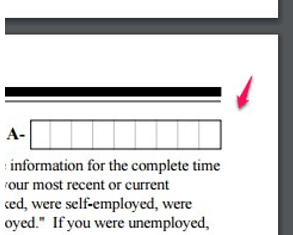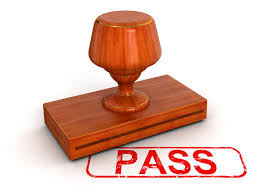Determining Eligibility
The first and most important step is learning if you qualify for citizenship. You can usually do so if you are at least 18 and have been a permanent resident for no less than five years (or three years if you are married to a U.S. citizen) and meet additional requirements.
Tip: To learn more about eligibility requirements, see Form N-400, Instructions for Application for Naturalization.
Filling Out the N-400

If you meet the criteria for eligibility, you can go ahead and complete Form N-400. Remember to have two passport-style pictures taken if you don’t live in the United States. Collect all of the paperwork and any supporting material that you are using to prove that you qualify for naturalization. Finally, double check to make sure your application package is complete.
Tip: You can reduce the risk of application processing delays, by reviewing everything thoroughly to be sure you have answered all questions and provided all of the necessary paperwork.
Receipt of Application

Two to three weeks after filing
If USCIS doesn’t have any questions or concerns about your Form N-400, Application for Naturalization, you will get an official confirmation letter, or Form I-797C, Notice of Action (see example) within two to three weeks. However, if the form is incomplete, USCIS will send either a Notice of Action rejecting the petition or a Request for Evidence that asks you to provide more material in support of your application.
Appointment Notice for Biometrics
Three to five weeks after filing
This is when USCIS will let you know about your biometrics appointment. The notice you receive will include the date, time and location of your appoint, which will probably be at a nearby USCIS Application Support Center. Routine but mandatory fingerprinting needed for security clearance and criminal background checks is also done during these appointments.
Tip: If you are at least 75 years old or older when you file your application, you do not have to pay the biometrics services fee. However, biometrics appointments are mandatory regardless of age. If you don’t get a biometrics appointment notice, you can make a case inquiry.
Biometrics Appointment
Five to eight weeks after filing
In most cases, the biometrics appointment, or biometrics screening, is a quick appointment lasting approximately half an hour. This is when USCIS takes your fingerprints, photograph, and signature. Your appointment notice will tell you what you need to take to the appointment. To learn more about the appointment, read USCIS biometrics appointment.
Tip: If you know or have reason to believe that you have a criminal record it is very important that you contact an immigration lawyer before your biometrics appointment. Some crimes will make you ineligible for immigration benefits. A lawyer can request a background check before USCIS does and act accordingly.
Appointment Notice for Naturalization Interview

Three to five months after filing
By now you should be ready for your citizenship interview because it is the next step. You’ll get the details about this important appointment from USCIS in the mail. It is important that you keep the scheduled appointment because rescheduling can cause delays. You can learn more about these issues by visiting How to Prepare for the Citizenship Interview and Test.
Tip: You must let USCIS know if you change your address after filing your Form N-400 within 10 days of your relocation by submitting Form AR-11, Alien’s Change of Address. You also must call USCIS at 1-800-375-5283 to change the address on your pending N-400 application.
Naturalization Interview

Four to six months after filing
During your interview, the USCIS will review your application verify the information, and evaluate your English language skills. This evaluation will also test your reading and writing skills, along with your knowledge of U.S. history and civics. Any concerns about your background check results will be reviewed and addressed at this time.
▪ If you are preliminarily approved for naturalization at the end of your citizenship interview and test, all you have to do is wait for official notification about the place and time of the oath ceremony. You will not officially become a United States Citizen until after you are “sworn in” at the ceremony.
▪ In some circumstances, the USCIS officer won’t be able to make a decision on your application on the day of your interview. If this happens, your case will be continued and you may be asked to provide additional evidence or go through another interview. Here are some of the most common reasons N-400 applications are continued or denied.
After your interview, USCIS will give you Form N-652, Naturalization Interview Results. This notice advises you about the results of your interview, and whether your application will be granted, denied, or continued.
Tip: If you think USCIS wrongly denied your Form N-400, you may request an appeal by filing Form N-336, Request for a Hearing on a Decision in Naturalization Proceedings, but you must do so within 30 days of the decision date.
Notice of Oath Ceremony
One to four weeks after the interview
Shortly after a successful interview, you will get an official notice from USCIS that includes details about the Oath of Allegiance (N-445, Notice of Naturalization Oath Ceremony). It includes a request to answer some additional questions that will be submitted at the actual oath ceremony. See a sample.
Tip: If you cannot attend your scheduled naturalization ceremony, return the notice, send Form N-445, Notice of Naturalization Oath Ceremony, to your local USCIS office, along with a letter requesting a new date and explaining why you cannot attend the ceremony as scheduled. Be aware that failing to go to a naturalization ceremony more than once may result in a denial of your application.
Oath of Allegiance Ceremony
Five to eight months after filing
This isn’t just a formality. If you do not take the Oath of Allegiance at a naturalization ceremony, you cannot and will not be legally recognized as a U.S. citizen. This vital and final step towards becoming a U.S. citizen takes place at an administrative or judicial ceremony. Once you have taken the Oath of Allegiance, you surrender your Green Card and receive your Certificate of Naturalization. Congratulations!
Tip: Review your Certificate of Naturalization and notify USCIS of any corrections to your certificate before leaving the ceremony site.